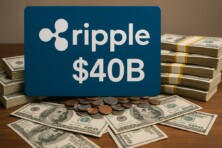The need for seamless integration between crypto and traditional financial systems is becoming more apparent. In this article, we explore the role of Binance and its native token, Binance Coin (BNB), in bridging the gap between crypto and traditional finance. Add on to your knowledge and explore the potential of CoinGPT trading platform. Read on!

Binance Visa Card: Revolutionizing Crypto Payments
One of the key features of the Binance Visa Card is its ability to enable instant conversion of cryptocurrencies into fiat currencies. This means that users can easily spend their digital assets at any merchant that accepts Visa, without the need for complicated manual conversions.
Security is a paramount concern when it comes to crypto payments, and Binance has taken extensive measures to ensure the safety of the Binance Visa Card. The card utilizes state-of-the-art security protocols, including advanced encryption algorithms and multi-factor authentication, to protect users’ funds and personal information. Additionally, Binance has implemented robust fraud detection and prevention mechanisms to mitigate any potential risks associated with unauthorized usage.
Applying for a Binance Visa Card is a straightforward process. Users can submit their applications through the Binance website or mobile app. The application typically requires basic personal information, KYC (Know Your Customer) verification, and adherence to anti-money laundering (AML) regulations. Once approved, the physical card is shipped to the user’s registered address, ready to be activated and used for crypto payments.
One of the key advantages of the Binance Visa Card is its wide acceptance. The card is supported by millions of merchants globally, allowing users to make payments at a vast network of retailers, both online and offline. This widespread acceptance significantly enhances the usability and utility of cryptocurrencies, promoting their adoption in mainstream commerce.
Bridging Crypto and Traditional Finance
One of the primary challenges in bridging crypto and traditional finance is the difference in infrastructure and regulatory frameworks. Cryptocurrencies operate on decentralized networks, while traditional financial systems are highly regulated and centralized. Binance has approached this challenge by working closely with financial institutions to establish partnerships and collaborations. These collaborations enable the integration of crypto assets into traditional financial platforms, allowing users to seamlessly move between the two systems.
Regulatory compliance is another crucial aspect of bridging crypto and traditional finance. Binance has prioritized compliance with Anti-Money Laundering (AML) and Know Your Customer (KYC) regulations to ensure the legitimacy and security of its operations. By adhering to these regulations, Binance not only safeguards its users but also fosters trust and confidence among traditional financial institutions.
One of the key initiatives in bridging the gap is the development of application programming interfaces (APIs) that facilitate interoperability between cryptocurrencies and traditional financial systems. Binance’s APIs enable developers to integrate Binance’s services, such as trading, payments, and asset management, into their existing financial applications.
Education and awareness play a vital role in bridging the gap between crypto and traditional finance. Binance actively promotes financial literacy and crypto education through various initiatives, including webinars, tutorials, and partnerships with educational institutions.
Advantages and Disadvantages of BNB and Binance Visa Card
One of the significant advantages of BNB is its utility within the Binance ecosystem. BNB serves as the native token on the Binance exchange, providing users with various benefits. These include reduced trading fees, participation in token sales, and access to exclusive features and promotions. By utilizing BNB, users can enjoy cost savings and enhanced opportunities within the Binance platform.
Additionally, BNB has demonstrated strong performance in terms of market value. As the demand for BNB increases, its value can appreciate, offering potential returns for investors. This investment potential makes BNB an attractive option for those looking to diversify their crypto portfolios.
When it comes to the Binance Visa Card, one of its key advantages is the ability to make crypto payments with ease. Users can seamlessly convert their cryptocurrencies into fiat currencies and use the card at millions of merchants globally. This widespread acceptance and convenience make the Binance Visa Card a practical solution for individuals looking to incorporate digital assets into their everyday transactions.
Lower transaction fees and faster settlement times are another advantage of the Binance Visa Card. Compared to traditional payment methods, crypto transactions often have lower fees, which can result in cost savings for users. Additionally, the decentralized nature of cryptocurrencies allows for faster settlement times, eliminating the need for intermediaries and reducing transaction processing delays.
Conclusion
BNB and the Binance Visa Card play a pivotal role in bridging the gap between crypto and traditional finance. With BNB’s utility within the Binance ecosystem and the convenience of the Binance Visa Card, users can enjoy cost savings, increased merchant acceptance, and seamless crypto payments.









